Detroit is booming – again. Here’s what’s behind the city’s new renaissance
Once a poster child for urban renewal, Motor City’s experiencing a fresh wave of revitalisation. But what’s different this time around?
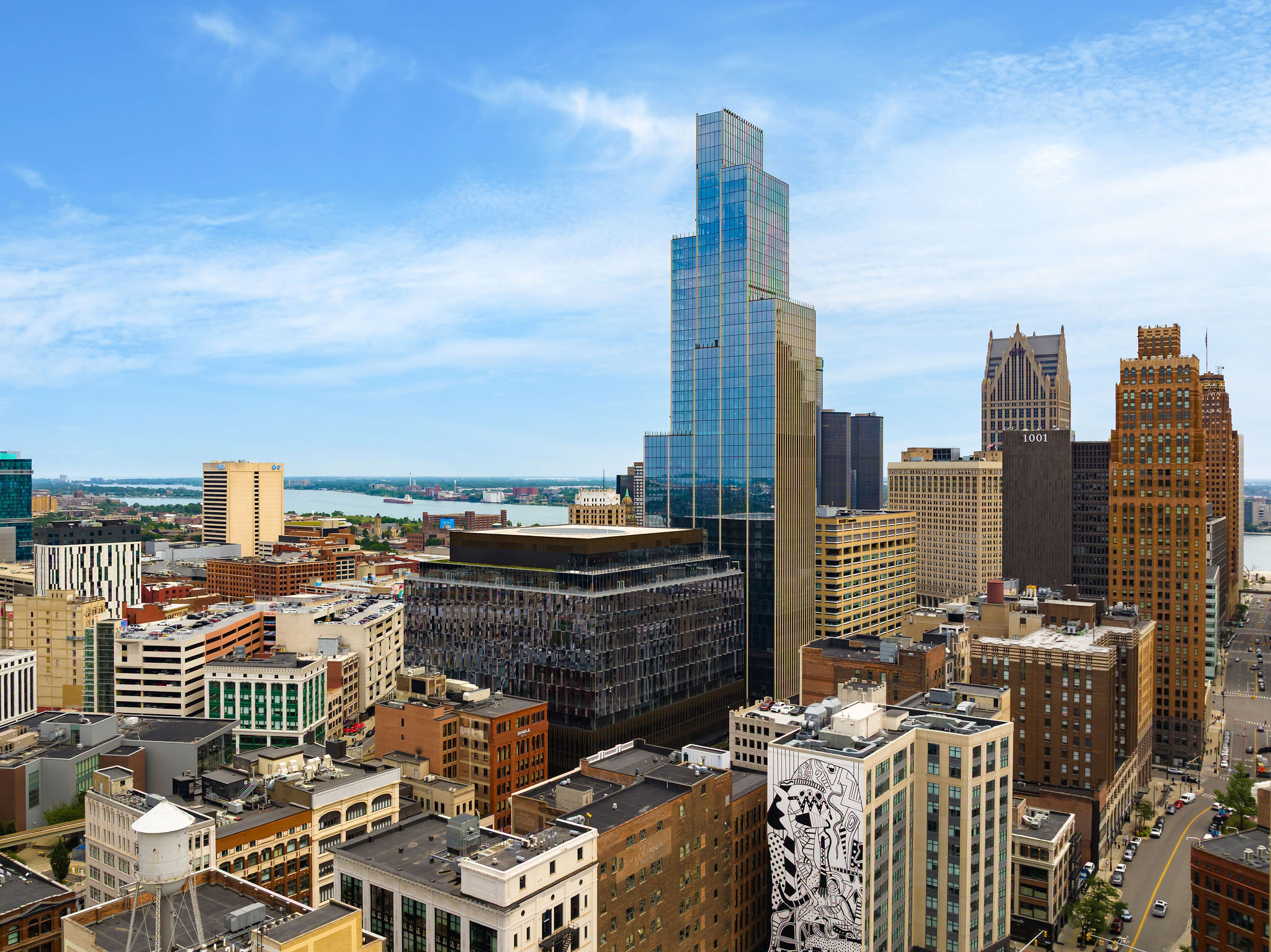
For more than three decades, Michigan Central, a grand Beaux-Arts train station that welcomed visitors to Detroit since it opened in 1913, sat derelict. Its shattered windows, peeling surfaces and graffiti-covered lobby became something of a poster child for the bankrupt city’s troubles and the ideal subject for so-called ‘ruin porn’ photography. About a decade ago, the possibility to rescue – and even renew – the building felt far-fetched, even as the rest of Detroit experienced a wave of redevelopment.
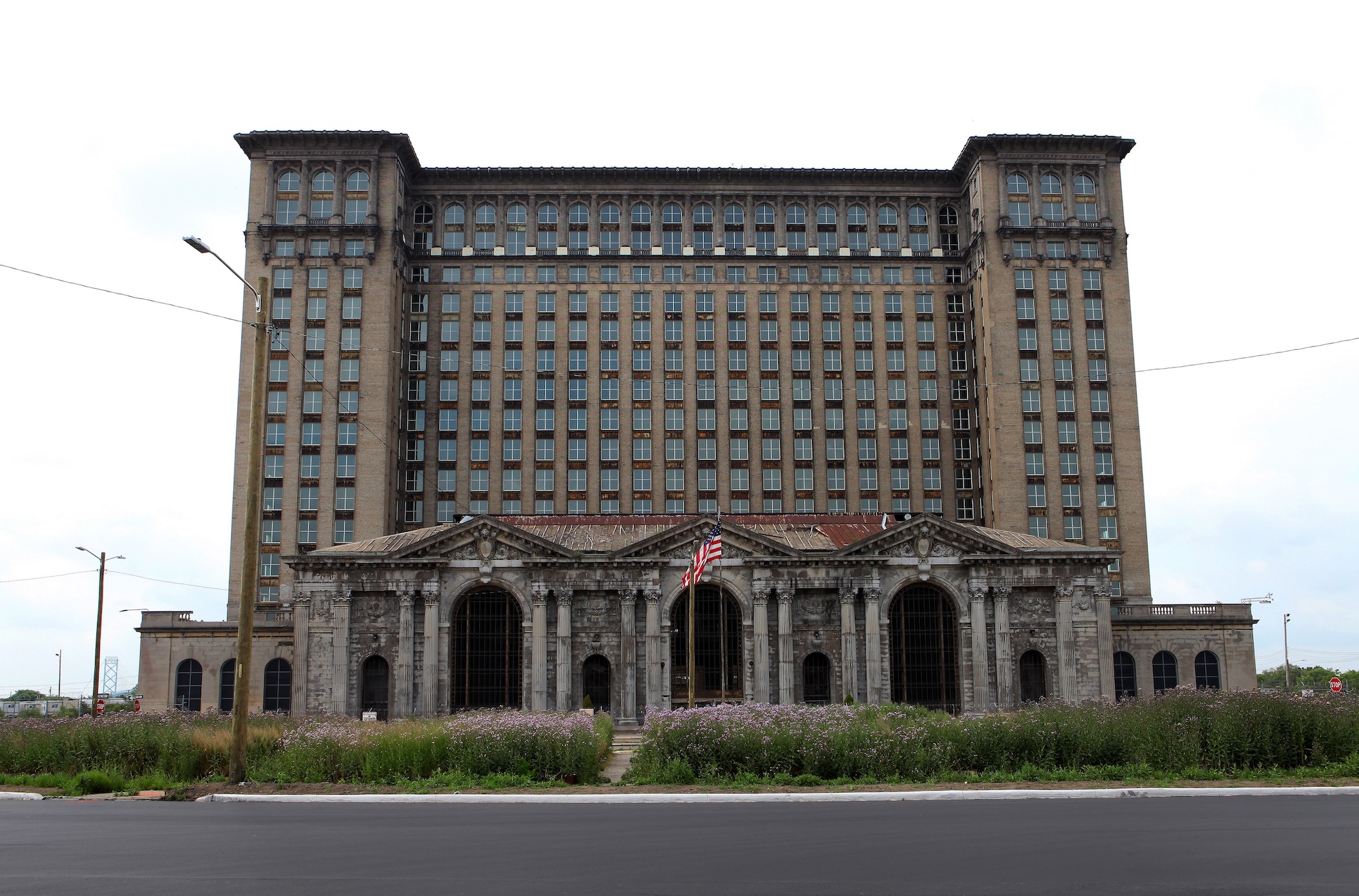
A view of a derelict Michigan Central Center in 2016.
Times have changed for Michigan Central. An ongoing redevelopment, spearheaded by Ford, has seen the building, and surrounding Corktown neighbourhood, turned into a mixed used tech campus with an emphasis on innovative mobility solutions, initiatives that recall the city’s history as the birthplace of the mass manufactured automobile. Along with a varied array of commercial tenants, the luxury hotel chain NoMad is set to move into the top few floors of the station’s meticulously-restored tower in the next year or so.
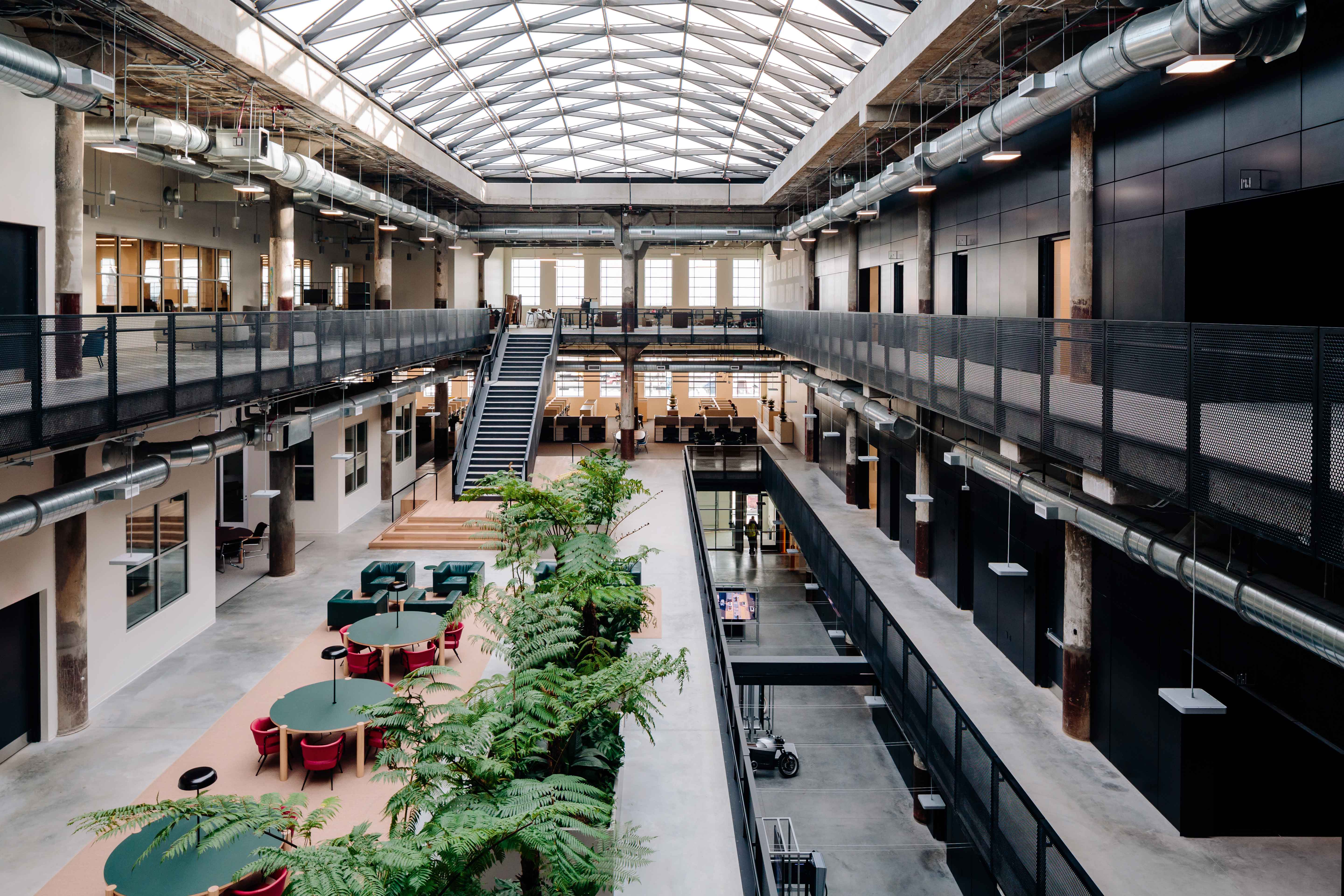
Today, the area surrounding Michigan Central has been redeveloped into a sprawling tech campus.
This complete 360-degree transformation is emblematic of a new wave of revitalisation sweeping Motor City, one that stems from the first seeds of scrappy urban renewal that began to emerge here a decade or two ago. Back then, organic farms and replanted urban forests started to crop up on the empty lots of former row houses. Creatives made good use of disused warehouses and bank buildings. And journalists eagerly chronicled the progress.
This time around, though, the development feels different, more considered, according to Detroit’s creative movers and shakers. Local architects, gallerists, developers and culturemakers have witnessed this movement enter a second ‘more mature’ phase – especially after the Covid-19 pandemic. And the evidence goes beyond anecdotal: According to census data, Detroit gained 12,500 residents last year. The New York Times even named it among its ‘52 Places to Go’ this year, citing its ‘remarkable signs of renewal.’
‘When I moved here ten years ago, Detroit’s creative scene was still very raw,’ says French-American culture journalist Margot Guicheteau, who recently released a travel book called Soul of Detroit. ‘It was like a jungle but in the best way possible. Everyone was talking about their vision for the city. Today, those visions are actually coming to fruition.’
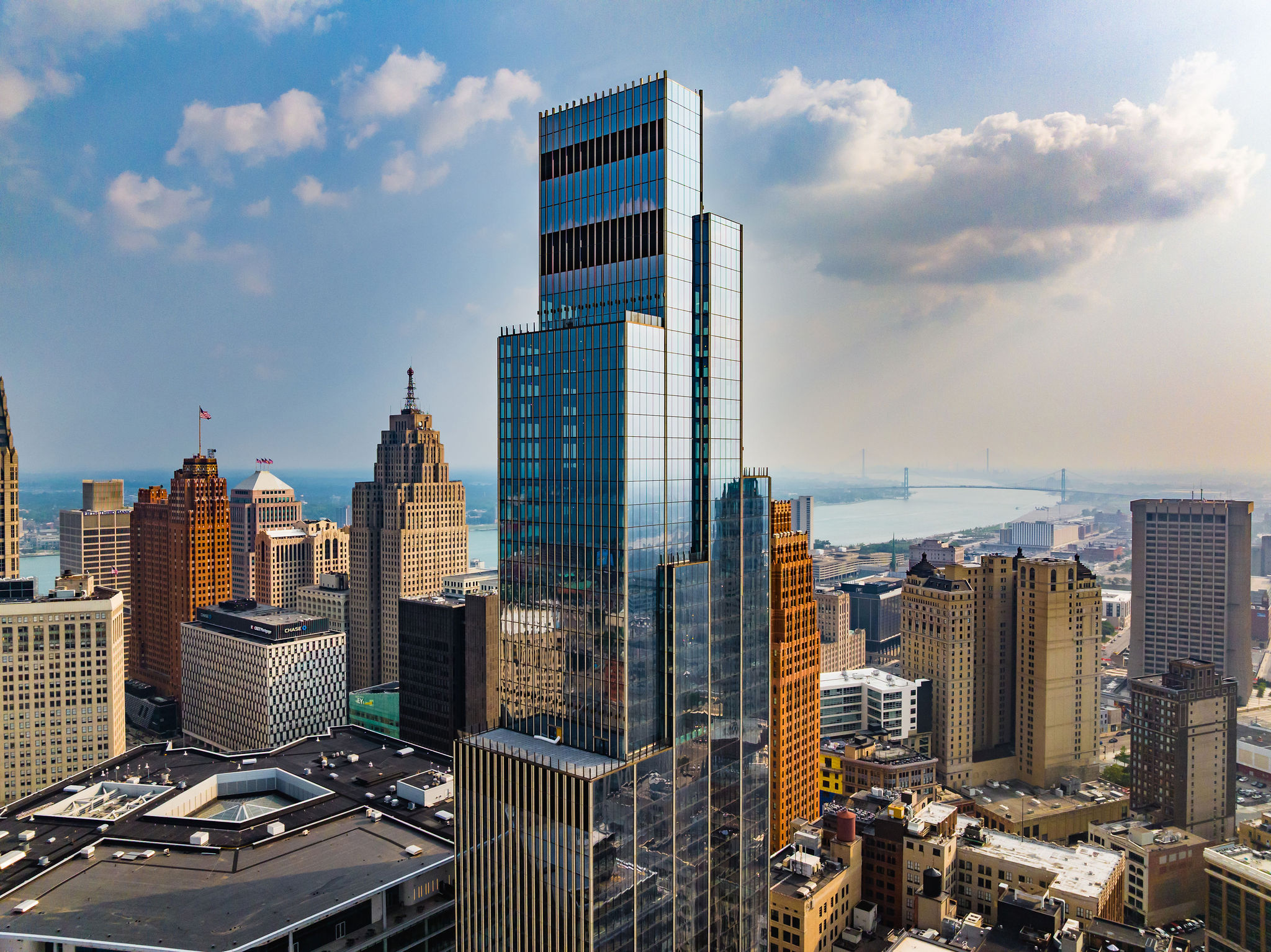
A view of Hudson’s Detroit, a new tower designed by SHoP
Downtown, Detroit’s evolution is obvious. Guicheteau points to Hudson’s Detroit, a mixed-use project that's home to General Motors’ new Downtown HQ, as a clear indication of this evolution. Designed by SHoP Architects, the sleek tower, on the site of the former JL Hudson’s department store, rises high over the skyline, and at night, lights up like a beacon visible from all corners of the city. It’s a project of development company Bedrock, which has been instrumental in reactivating the district; turning empty storefronts and historically significant buildings into hybrid retail and cultural spaces. The recently renovated Book Tower – another example of ornate early 20th-century architecture that fell victim to postindustrial decline – is now a mixed-used complex with luxury residences topping co-working spaces and a shopping arcade with premium restaurants. It’s far more polished than the image many outsiders might still have of Detroit.
‘There’s a misconception that the grassroots, DIY approach left the city. It’s very much alive but has shifted, almost exclusively, to the neighborhoods.’
Anthony Curis, Library Street Collective
Still, according to locals, there’s an underlying sense of resourcefulness, adaptability, and collaboration driving this new chapter. ‘There’s a misconception that the grassroots, DIY approach left the city,’ says Anthony Curis, co-founder of Downtown Detroit art gallery and cultural platform Library Street Collective. ‘It’s very much alive but has shifted, almost exclusively, to the neighborhoods.’
Receive our daily digest of inspiration, escapism and design stories from around the world direct to your inbox.
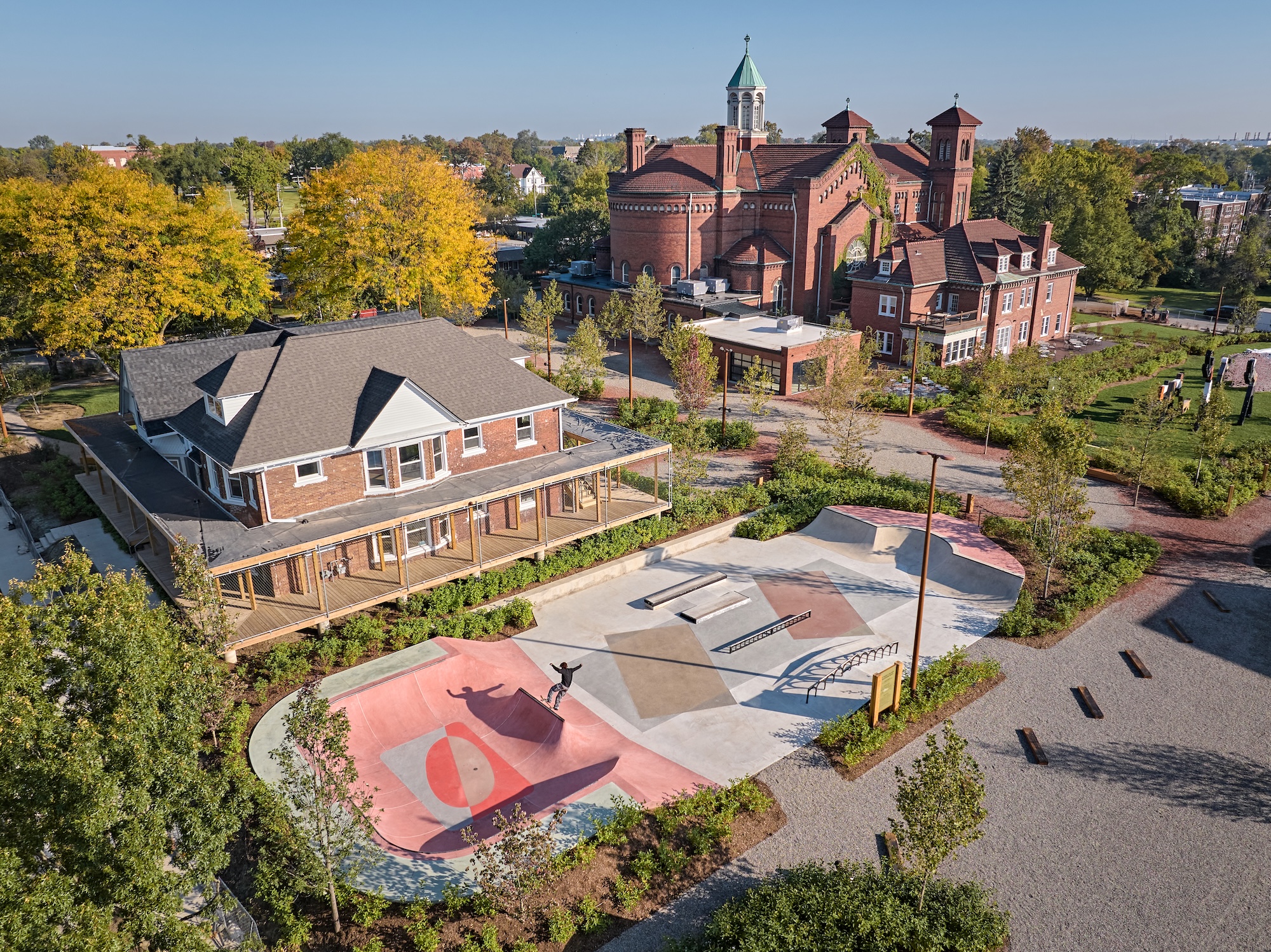
Little Village is now home to the new Shepherd Arts Center and a pocket skate park spearheaded by Tony Hawk.
One neighbourhood that’s experienced an explosion of growth in recent years is Little Village, a historically residential pocket west of downtown that all but emptied out during Detroit’s decline starting in the ‘70s. Curis and his wife and business partner, JJ, helped kickstart the neighbourhood’s comeback, not just as traditional real estate developers but as prominent art world figures that have invested in the city, their hometown. Last year, they opened the Shepherd Arts Center in a large, formerly disused Romanesque church in Little Village. The complex is anchored by an expansive hall for temporary exhibitions designed sensitively converted by Brooklyn-based architecture firm Peterson Rich Office. The cultural campus also includes a rectory turned bed and breakfast; a wine bar called Father Forgive Me; a bakery designed by prolific local practice UNDECORATED; a pocket skate park that Tony Hawk helped imagine; and a sculpture garden showcasing works by native son, the late, great Charles McGee.
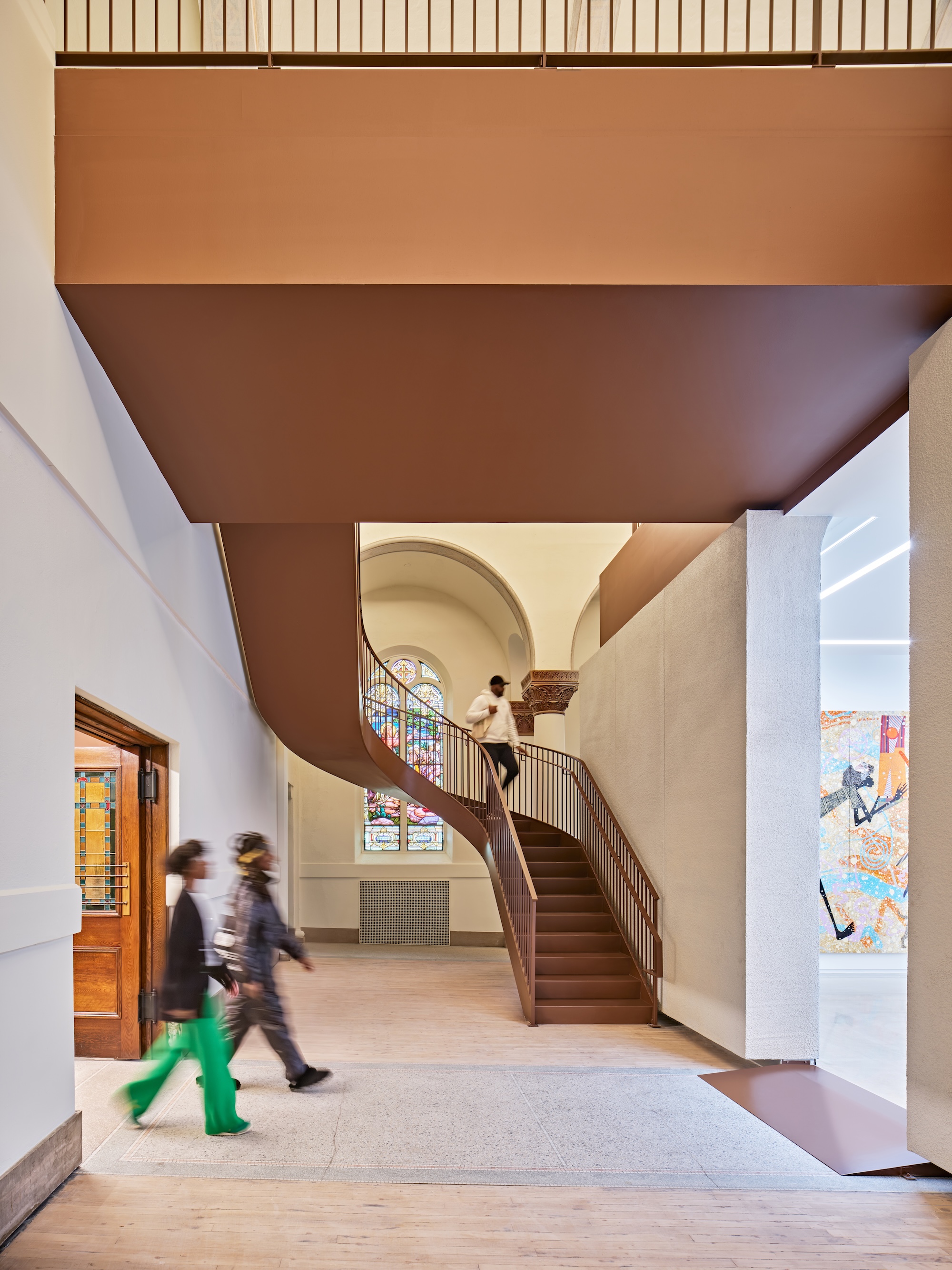
Inside the Shepherd, which is set in a former church converted by Peterson Rich Office.
There’s even more coming to Little Village in the next few years. There’s already the OMA-designed LANTERN complex—home to PASC, an artists program and gallery supporting developmentally disabled artists, and Signal Return, a nonprofit arts organization dedicated to preserving and teaching traditional letterpress printing. In addition to revamping historic houses to serve as affordable artists homes, the Curises are also teaming up with cutting-edge architecture practice SO-IL and design firm OSD (Office of Strategy + Design) to develop Stanton Yards, an 80,000 sq ft waterfront depot set to become an additional exhibition space and functional marina. It’s slated to open in 2027.
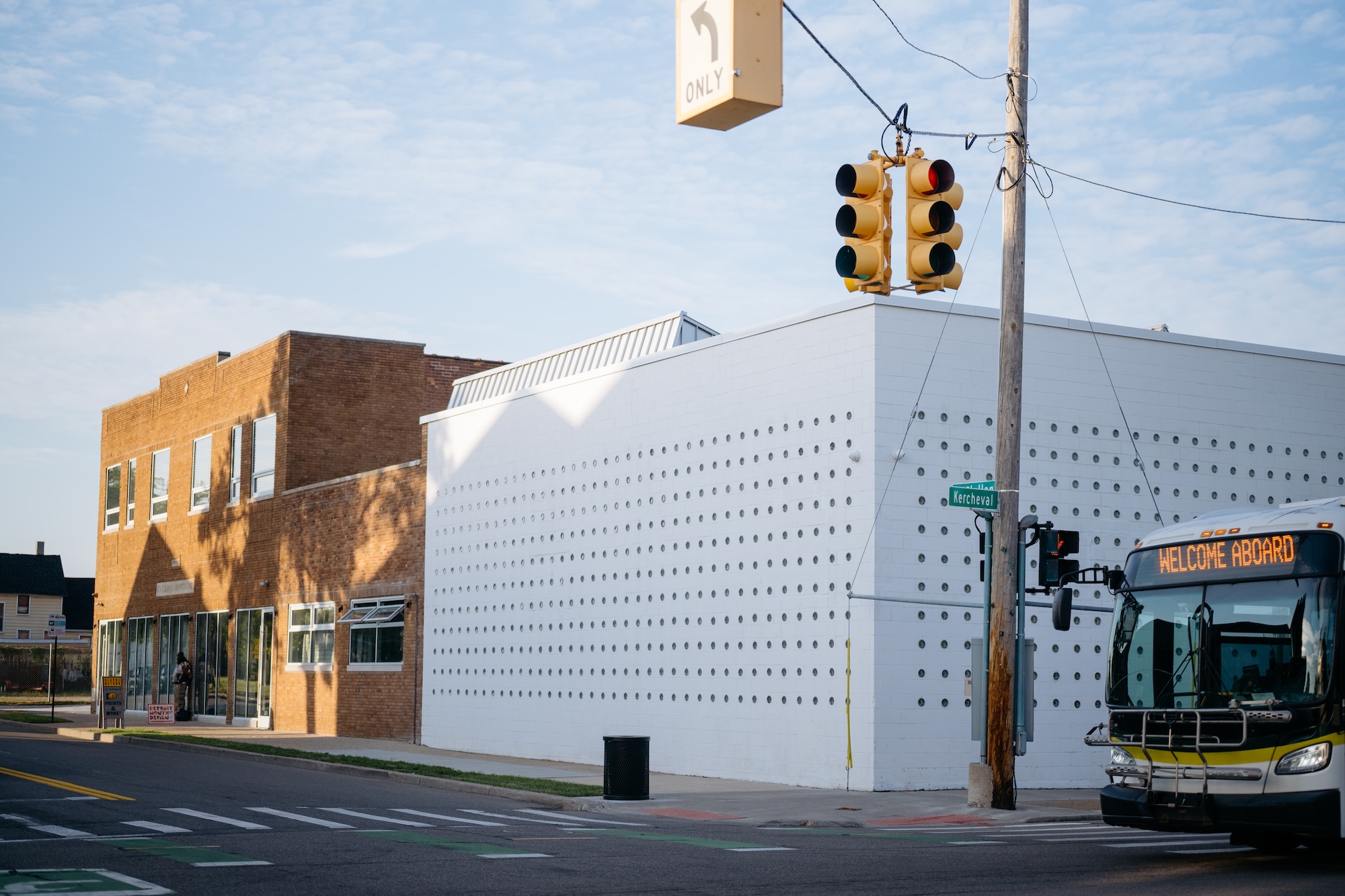
An exterior view of the OMA-designed PASC building in Little Village.
The combination of hospitality, retail and culture seems to be a winning mix for these projects — fully reflecting Detroit’s spirit of agility. It has inspired others to get in on the game. Take Isabelle Weiss, Detroit native and founder of long established art, craft and design gallery I.M. Weiss. She recently moved from a converted industrial space across town to a combined home/gallery called Lava House in the neighbourhood, also designed by UNDECORATED.
‘Detroit has a history of adaptability and artists have always been at the forefront of that,’ Weiss says. ‘That adaptability is still happening but the script is starting to flip; of course artists are still converting spaces but in some communities like Little Village, art and the needs of the creative community guide its development.’
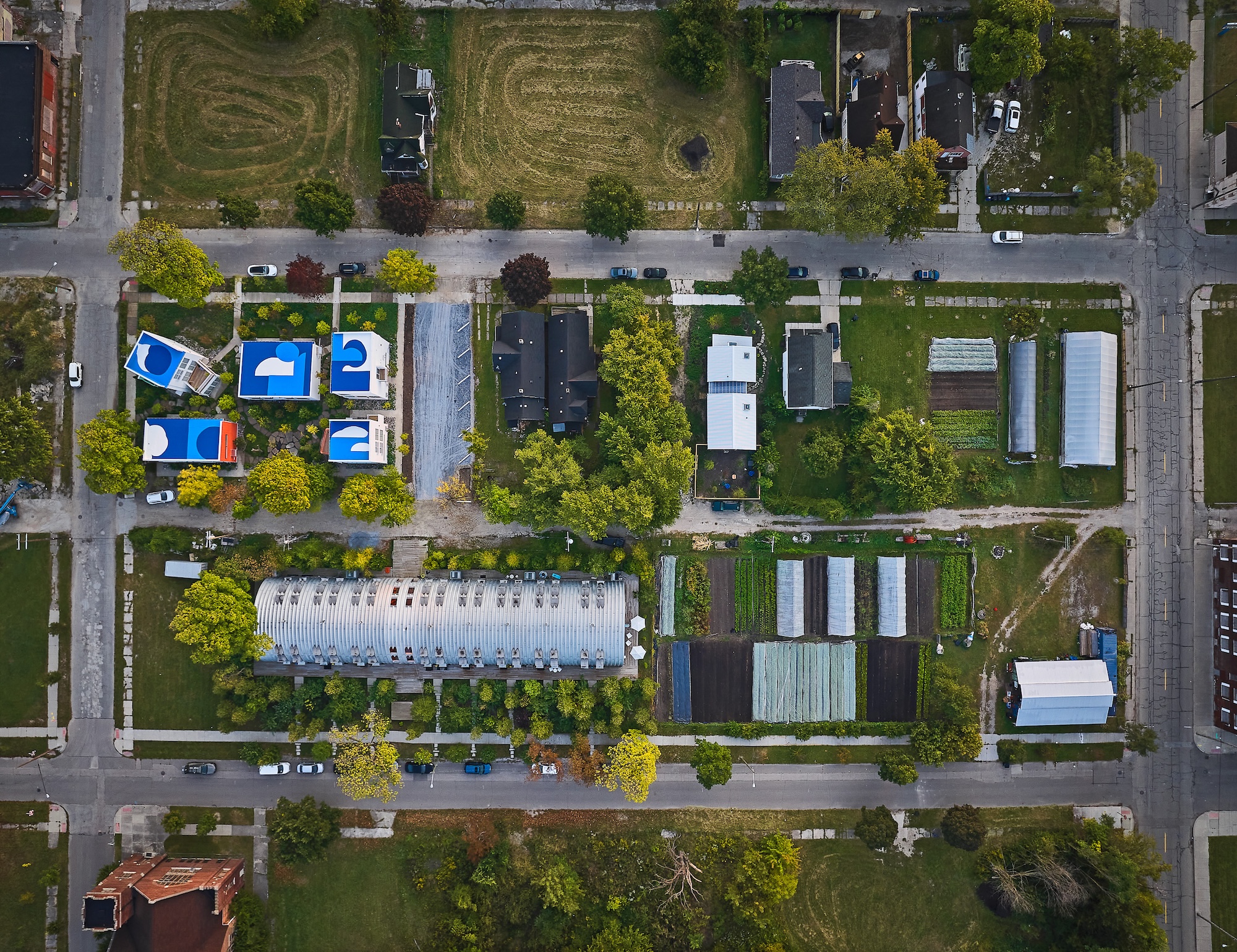
Core City, a neighbourhood located just to the northeast of Corktown, is also blossoming. Philip Kafka, the leader of development company Prince Concepts, has opened numerous projects in the area since 2016, many in collaboration with UNDECORATED creative director Ishtiaq Jabir Rafiuddin. There’s the live-work community True North and the Caterpillar apartments, both designed to emulate quonset hut architecture. The Grand River Block complex includes an animation school, temporary event spaces and the BARDA restaurant — arguably, UNDECORATED’s most recognized project.
Landscape architect Julie Bargmann of Charlottesville, Virginia-based firm D.I.R.T Studio designed Core City Park, as the area’s main greenspace forged out of an underutilized and poorly maintained parking lot. Meanwhile, on 10 surrounding blocks, homes are being erected on empty plots by self-builders including Guicheteau and Rafiuddin. These contemporary structures interweave between the homes that have stood here for decades.
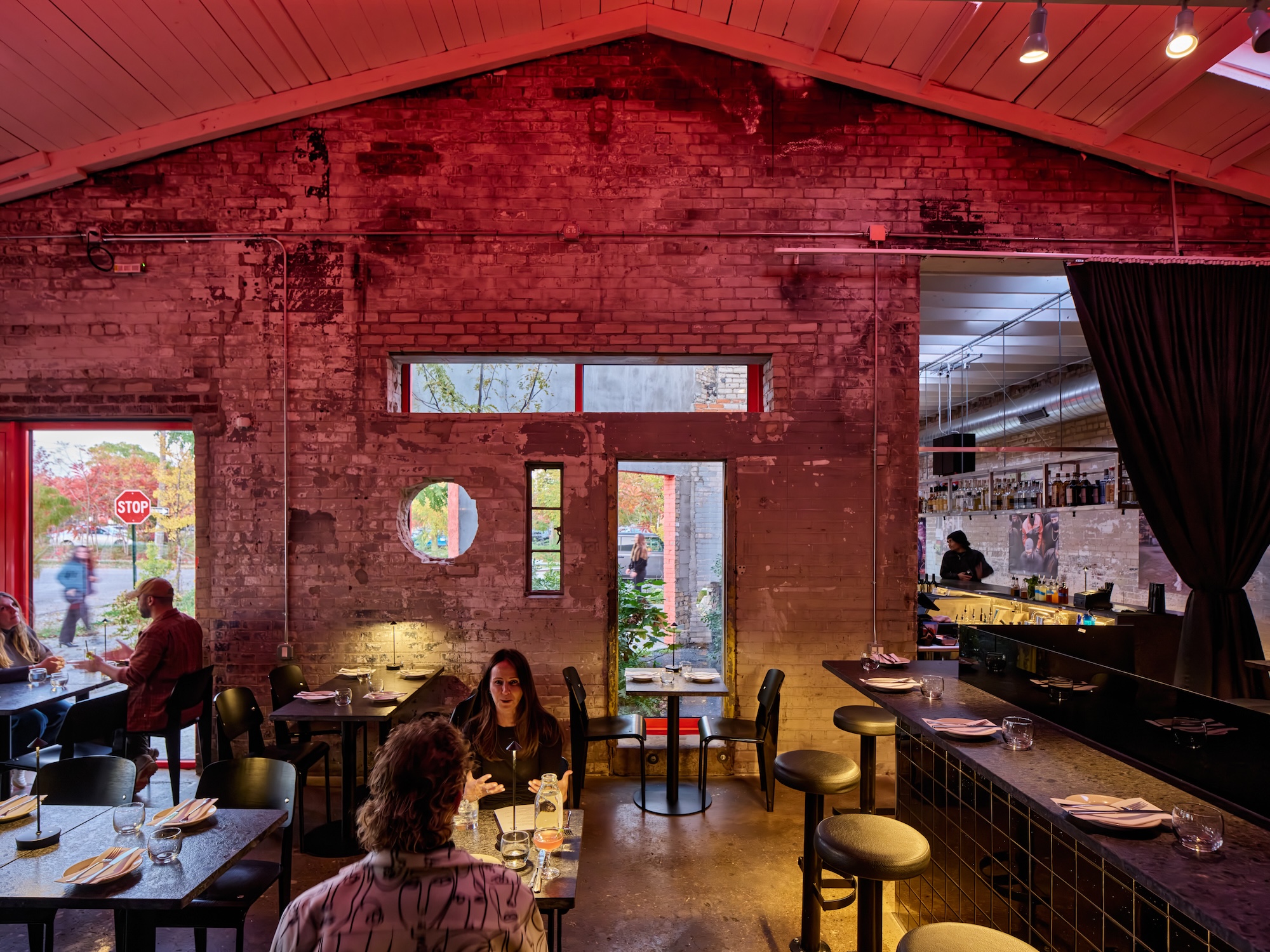
Inside the White Building, a once-derelict garage in Cork City reimagined by UNDECORATED.
New homeowners interact with those that have lived here for much longer. There’s a degree of ease in human connection in Core City one could never find in a New York apartment building, resident and independent architect Chelsea Hyduk notes. She moved here from New York a few years ago and recently completed her home/office. Guicheteau and Hyduk recently established the Block Club to support this exchange and share resources, even if that’s helping to remove the brush and bramble of the site of a new home going up down the street.
‘Detroit is a real place, and that's why it's also creative.'
Philip Kafka, Prince Concepts
‘Detroit is a real place, and that's why it's also creative,’ says Kafka, of Prince Concepts. ‘The friction never left. It changed.’ Though he hints at how the community might have become more segmented given the sheer growth of Detroit's creative scene — ‘It’s gone from being a village into a city’ — he welcomes the other initiatives as having helped further articulate the city’s unparalleled position.
‘Michigan Central is developed by a car company. Little Village is developed by an art gallery,’ Kafka adds. ‘There is nothing wrong with that. Both are good work, but Core City is developed by an individual (myself) who has attracted other individuals to also build their own projects.’ He sees much of what’s taken place here — a slower, more considered, supplementive rather than substitutive form of development — as an example for other cities.
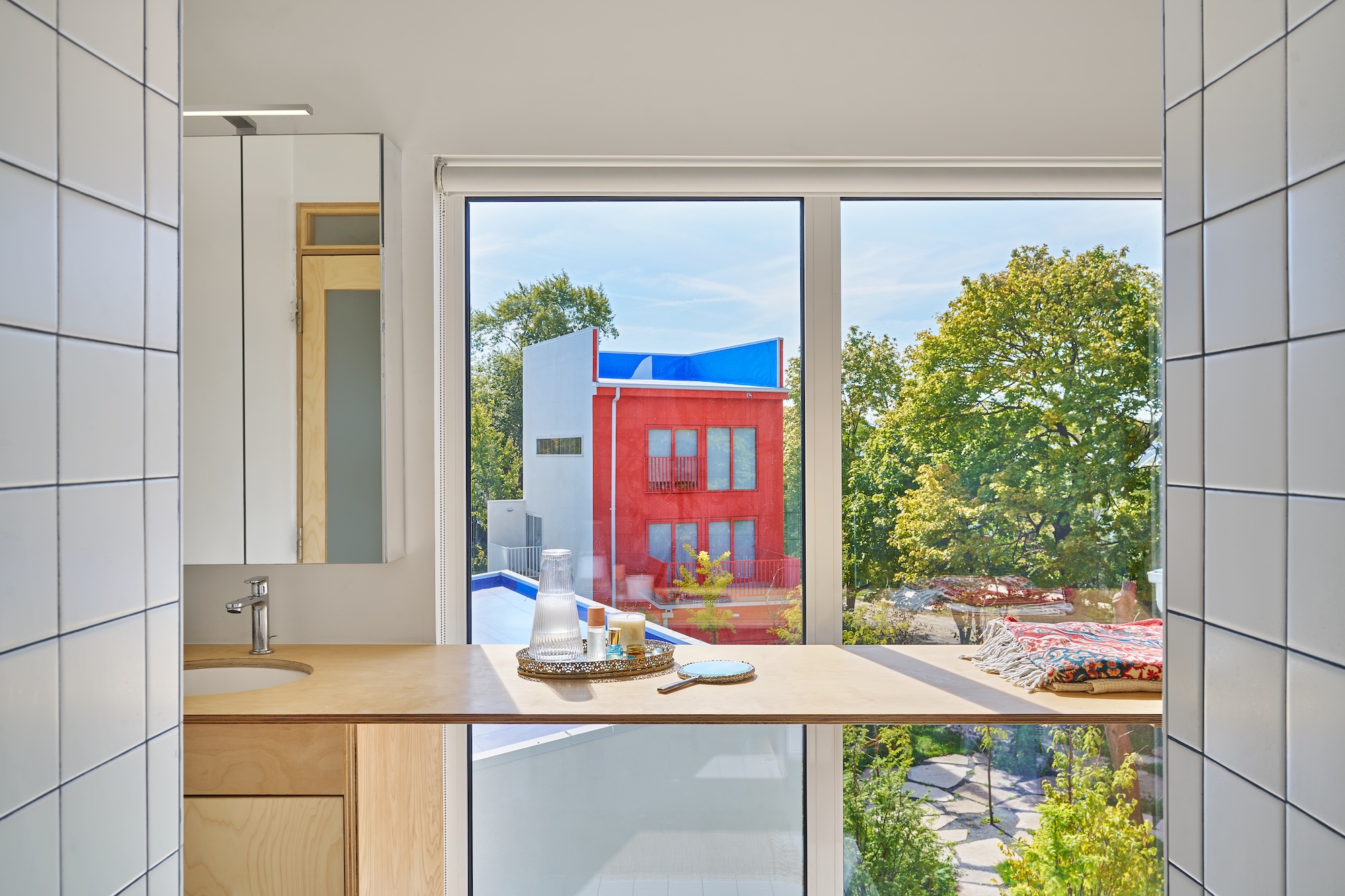
Views of the Canopy, a series of new duplexes in Core City.
And the word is getting out. Since 2011, Design Core Detroit has been mounting Detroit Month of Design, a city-wide festival that spotlights local creatives and projects. The festival was established, in part, ‘to showcase Detroit’s broad design ecosystem to national and global audiences,’ says Design Core co-director Kiana Wenzell. A decade ago, UNESCO even made Detroit a Creative City of Design, the only city in the US to hold the designation. According to co-director Bonnie Fahoome, it has led to more investment from civic and community partners.
When looking back at what Detroit was a decade or two ago, Wenzell notes that it was much more a period of urban repair than renewal. ‘Many longtime Detroiters, including myself and my parents, were here before, during, and after that moment,’ Wenzell says. ‘The focus for us was repairing infrastructure, investing in neighbourhood commercial corridors, and reshaping negative narratives that often overshadowed Detroit’s strengths.’
’The difference today is that more people are paying attention,’ Fahoome adds.
Adrian Madlener is a Brussels-born, New York-based writer, curator, consultant, and artist. Over the past ten years, he’s held editorial positions at The Architect’s Newspaper, TLmag, and Frame magazine, while also contributing to publications such as Architectural Digest, Artnet News, Cultured, Domus, Dwell, Hypebeast, Galerie, and Metropolis. In 2023, He helped write the Vincenzo De Cotiis: Interiors monograph. With degrees from the Design Academy Eindhoven and Parsons School of Design, Adrian is particularly focused on topics that exemplify the best in craft-led experimentation and sustainability.
-
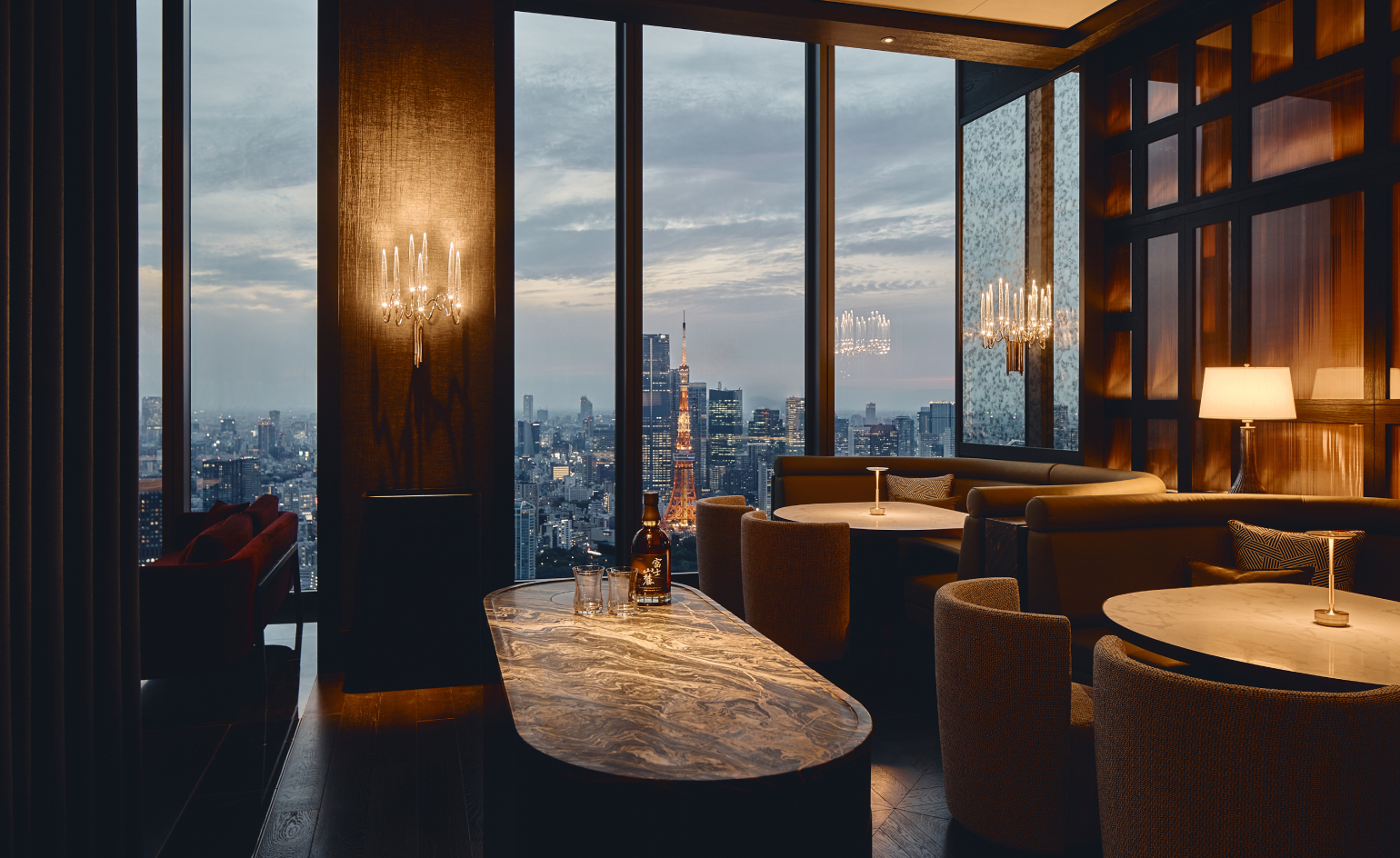 Is this Tokyo’s most alluring new hotel?
Is this Tokyo’s most alluring new hotel?In the world’s busiest capital, a new benchmark for serenity emerges 35 floors above ground. We checked into the Fairmont Tokyo
-
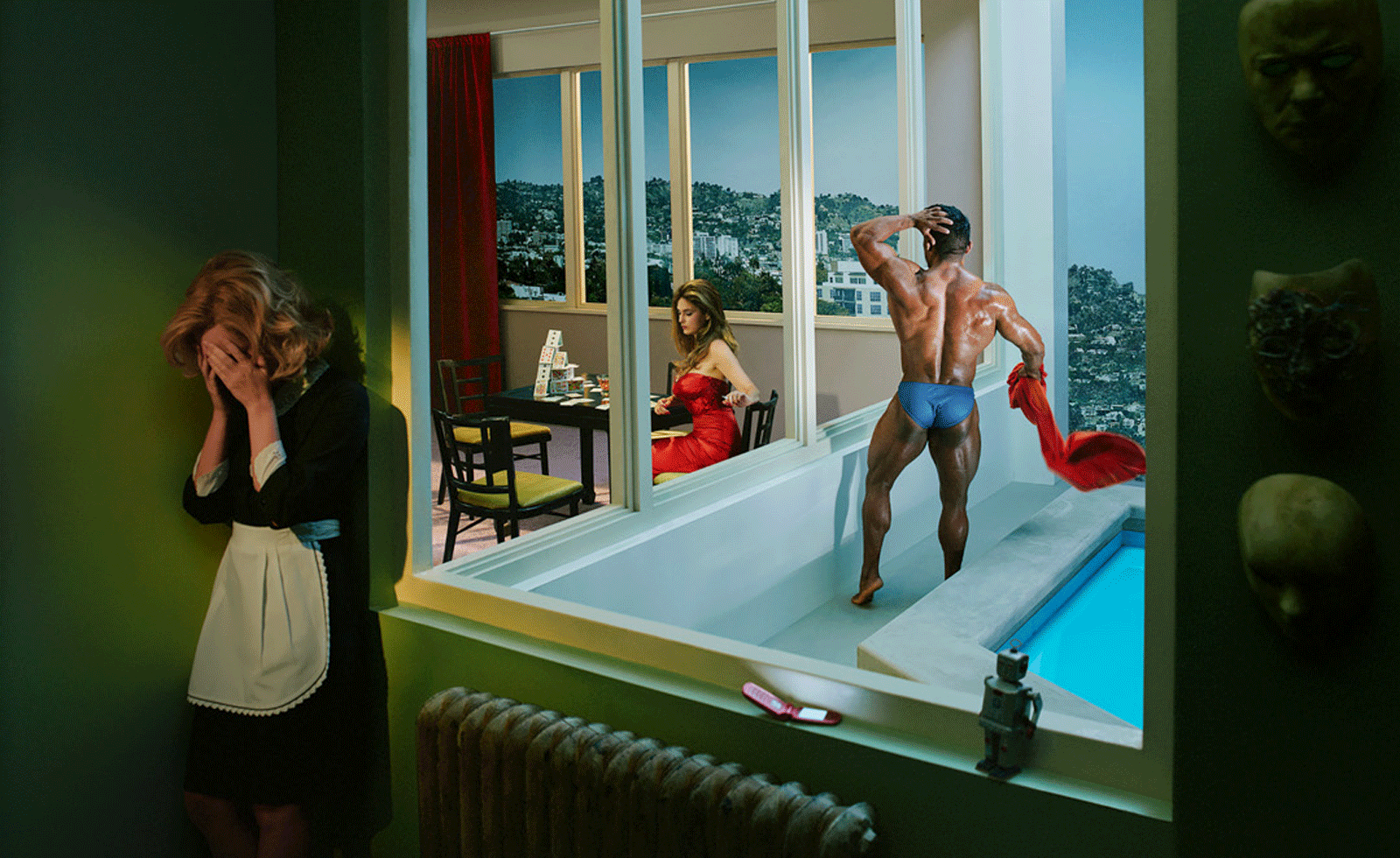 What to see at Art Basel Miami Beach 2025 – nine brilliant booths
What to see at Art Basel Miami Beach 2025 – nine brilliant boothsThe buzzy Miami art fair (5-7 December) will bring together more than 280 leading international galleries and a packed week of pop-ups and parties – start with these must-see booths
-
 An elegant Argentine restomod keeps the spirit of the sporting 1930s alive
An elegant Argentine restomod keeps the spirit of the sporting 1930s aliveThe SP40 Restomod by Iconic Auto Sports is an update of a classic 1930s custom job, enhanced for the modern era